
Welcome back!
In a previous blog post (The Importance of Vegetation, June 25th) I talked all about the heart and soul of wet meadows and tallgrass prairies…vegetation, but this week I wanted to take it one step further and talk about what I’ve learned about restoring and conserving these landscapes through the power of seeds! When I covered vegetation surveys before, I mentioned how the Crane Trust monitors the natural habitat of the Platte River and surrounding landscape, but what about the areas that need to be restored? How does the Crane Trust establish a healthy ecosystem in an overgrazed prairie landscape or on land that was once a crop field? Well, that’s what I learned this week!
Land, in all shapes and sizes, are either purchases, donated, or protected under conservation easements in order to continue the Crane Trust’s mission. First, the condition of these areas is evaluated before a management plan is established. Depending on the condition of the restoration, a management plan might begin with reseeding the prairie to establish the proper vegetation needed in order to support the surrounding wildlife. Though disking, prescribed fire, grazing, and spraying of invasive plants is all a part of the management plan, reintroducing native plant diversity back to some of these areas is key. But, how does the Crane Trust conquer this task? I worked alongside Joshua Wiese, the Habitat Ecologist, this week as he taught me the seeds of success to a beautiful and healthy prairie ecosystem!
Joshua took me and the Lila O. Wilson Intern, Matthew Schaaf, out to one of the Crane Trust’s many properties armed with a bucket and a few large envelopes. After kneeling down and finding a thin, calf-high, leaf of what looked like grass, he explained to us that the plant was actually a type of native sedge in the Carex genus, specifically Plains oval sedge (Carex brevior). He showed Matthew and I the top of the sedge, which revealed very small, lenticular (magnifying glass)-shaped seeds (Below). I learned that sedges form the foundation of both aquatic and terrestrial food chains and that they are an important part of tallgrass prairie and wet meadow ecosystems. That day we spent a little over an hour collecting these seeds by hand, although Joshua did mention that some seeds could be collected mechanically. While to some the task might have seemed mundane and tedious, I was overtaken by the idea that these small seeds that I was gathering had the potential to be important wildlife habitat. After we filled the bucket and a few envelopes, Joshua took us back to the Crane Trust’s greenhouse where we were introduced to the other way in which plant species are reintroduced.
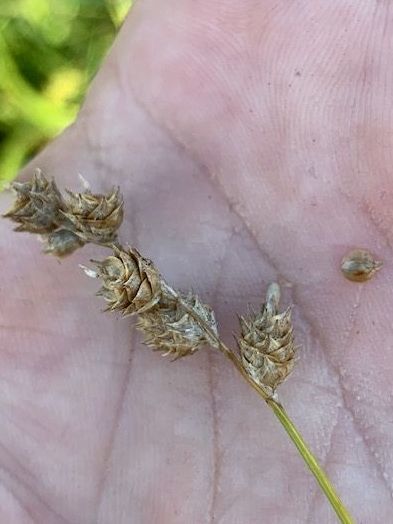
Though the outside of the greenhouse looks modest (Below), the inside holds the floral beauty and smell of a natural prairie. Joshua showed Matthew and I the different species that were grown specifically for pollinators, including violets, milkweed, spotted bee balm, and cardinal flower (a state species of concern). These plant species not only provide the nectar and food resources that regal fritillaries, monarch butterflies, and hummingbirds need, but also offer shelter other wildlife species. The seeds collected can be sewn by hand or by using a drop seeder to ensure proper implementation. All of this work helps attempt to move the landscape back into its original, healthy and native state.
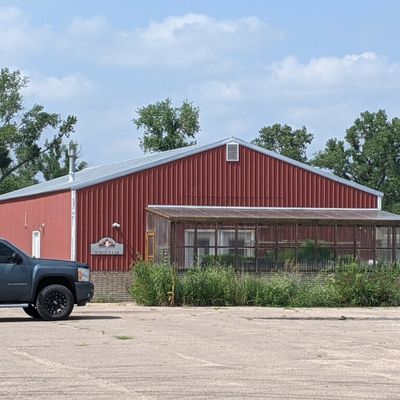
Over the past two weeks Mathew and I have expanded our search of native plant seeds for collecting, such as wild garlic (Allium canadense) (Right), Canada milkvich (Astragalus canadensis) (Left), and fox sedge (Carex vulpinoidea) (Bottom). Getting to experience this has opened my eyes to the role I play in the long-term conservation of this tallgrass prairie ecosystem and never in my wildest dreams could I have imagined it feeling this good! If you are looking to volunteer your time to be a part of this process or any of the others I have written about, please visit this link: https://cranetrust.org/how-to-help/volunteer.html
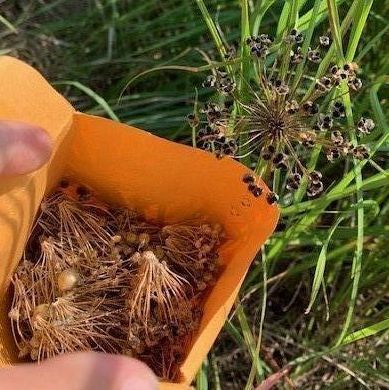
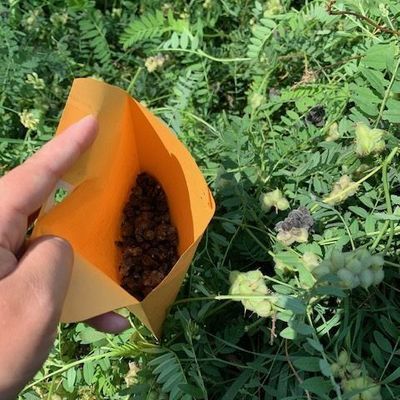
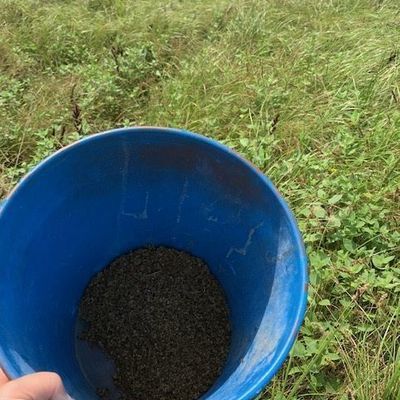
To learn more about seed collecting and greenhouse work at the Crane Trust, including how to make your own seed bomb with Crane Trust employees in collaboration with Nebraska Game and Parks, visit this link: https://linktr.ee/cranetrustseeds
Until next time!
Cheers,
Amanda Medaries

